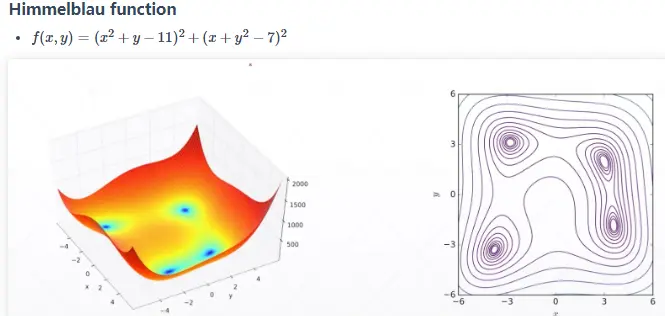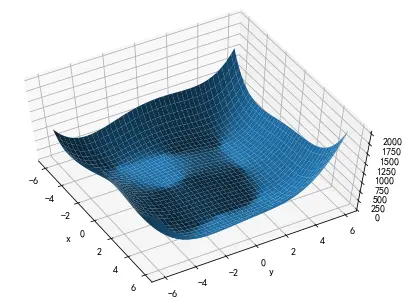

import numpy as np
import matplotlib.pyplot as plt
from mpl_toolkits.mplot3d import Axes3D
def himmeblau(x):
return (x[0]**2 + x[1] - 11)**2 + (x[0] + x[1]**2 - 7)**2
x = np.arange(-6, 6, 0.1)
y = np.arange(-6, 6, 0.1)
print(f'x_shape: {x.shape},y_shape: {y.shape}')

# 生成坐标点
X, Y = np.meshgrid(x, y)
print(f'X_shape: {X.shape},Y_shape: {Y.shape}')

Z = himmeblau([X, Y])
fig = plt.figure('himmelblau')
ax = Axes3D(fig)
ax.plot_surface(X, Y, Z)
ax.view_init(60, -30)
ax.set_xlabel('x')
ax.set_ylabel('y')
plt.show()

import tensorflow as tf
x = tf.constant([-4.,0.])
for step in range(200):
with tf.GradientTape() as tape:
tape.watch([x])
y = himmeblau(x)
grads = tape.gradient(y,[x])[0]
x -= 0.01 * grads
if step % 20 == 0:
print(f'step: {step}, x: {x}, f(x): {y}')
